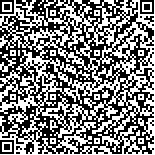| 陈 玉,张 欢,许 可.基于山东省农村上消化道癌早诊早治项目的食管鳞癌及其癌前病变高危人群预测模型研究[J].中国肿瘤,2021,30(11):820-826. |
| 基于山东省农村上消化道癌早诊早治项目的食管鳞癌及其癌前病变高危人群预测模型研究 |
| A Predictive Model for High Risk Population of Esophageal Squamous Cell Carcinoma and Precancerous Lesions Based on Upper Gastrointestinal Cancer Screening Programme in Rural Areas of Shandong |
| 中文关键词 修订日期:2021-06-28 |
| DOI:10.11735/j.issn.1004-0242.2021.11.A004 |
|
 |
| 中文关键词: 食管鳞癌 癌前病变 预测模型 山东 |
| 英文关键词:esophageal squamous cell carcinoma precancerous lesions prediction model Shandong |
| 基金项目:山东省自然科学基金(ZR2020KH029);山东省医药卫生发展计划面上项目(202012070803) |
|
| 摘要点击次数: 1486 |
| 全文下载次数: 493 |
| 中文摘要: |
| 摘 要:[目的] 分析食管鳞癌及其癌前病变的危险因素,建立并验证食管鳞癌风险预测模型。[方法] 选取2017年3月至2020年9月参加山东省“农村上消化道癌早诊早治项目”中40~69周岁的人群,应用1∶4倾向评分匹配方法(匹配因素:年龄、性别、收入、教育水平)均衡病例组和对照组基线信息,纳入病例组1 410例,对照组5 640例。将人群按7∶3随机分为训练集(n=4 926)和验证集(n=2 124),分别用于建立模型和模型验证。采用χ2检验进行单因素分析,将P<0.1的因素纳入条件Logistic回归进行多因素分析,将筛选出的影响因素建立列线图模型并计算C指数以评价模型区分度,绘制校准曲线评价其一致性。[结果] Logistic回归分析发现,有家族史、饮酒、高油炸食品、霉变食品、腌制食品摄入、低肉蛋奶类、豆类食品摄入是食管鳞癌发病的危险因素。建立基于以上7项因素的食管鳞癌高危人群列线图模型,其训练集和验证集的受试者工作特征曲线下面积分别为0.714(95%CI:0.696~0.733)和0.722(95%CI:0.704~0.741),表明该模型具有较好的区分度;校准图显示预测概率和实际概率较一致,综合两个指标表明该模型具有较好的预测能力。[结论] 基于环境和生活方式等7项因素的食管鳞癌及癌前病变高危人群预测模型具有较好的预测价值,可用于选择应接受内窥镜检查的个体和群体,以促进食管癌的精准筛查,提高筛查效益。 |
| 英文摘要: |
| Abstract: [Purpose] To establish a predictive model for esophageal squamous cell carcinoma based on the risk factor analysis. [Methods] Subjects aged 40~69 years who participated in the “early diagnosis and early treatment of upper gastrointestinal cancer in rural areas program” in Shandong Province from March 2017 to September 2020 were selected. Propensity score matching method(matching factors: age, gender, income, education level) was used to balance the baseline information between the case and control group, and finally 1 410 cases and 5 640 controls were included. The two groups randomly divided into training set(n=4 926) and verification set(n=2 124) with a ratio of 7 to 3. Chi-square test was used for univariate analysis, and the factors with P<0.1 were included in conditional multivariate Logistic regression analysis. The nomogram was established based on the risk factors to evaluate the efficacy of differentiation using the C index and a calibration curve was drawn to evaluate the consistency of the model. [Results] Logistic regression analysis showed that family history of cancer, alcohol drinking, high pickled, fried and moldy food consumption, low meat, egg, milk products and beans consumption were risk factors of esophageal squamous cell carcinoma and precancerous lesions. The area under the receiver operating characteristic(ROC) curve(AUC) of the training set and the validation set was 0.714(95%CI:0.696~0.733) and 0.722(95%CI:0.704~0.741), respectively, indicating that the nomogram model established based on 7 risk factors had a good capability of differentiation. The calibration curve showed that the prediction probability was consistent with the actual probability, and the combination of the two indicators showed that the model had a good prediction ability. [Conclusion] The model for prediction of esophageal squamous cell carcinoma and precancerous lesions developed in the study based on environment and life style factors has a good predictive value and can be used to select individuals who should undergo endoscopic examination, which may promote the screening accuracy and improve the screening efficiency for esophageal cancer. |
|
在线阅读
查看全文 查看/发表评论 下载PDF阅读器 |